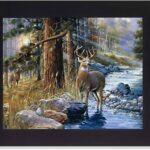I. Understanding Shabby Chic Fashion: The Aesthetic and Inspiration
II. Creative Upcycling Techniques for Shabby Chic Clothing
III. Essential Tools and Materials for Upcycling Projects
Understanding Shabby Chic Fashion: The Aesthetic and Inspiration
Shabby chic fashion is more than just a style; it’s a delightful blend of romantic charm and vintage elegance. Imagine stepping into a cozy, sunlit room filled with antique furniture, soft pastel colors, and beautiful floral patterns. That’s the essence of shabby chic, and it’s equally captivating when translated into clothing. So, let’s dive into what makes this aesthetic so special, shall we?
The Aesthetic of Shabby Chic
At its core, shabby chic fashion embodies a sense of comfort and femininity. It often features:
- Soft Colors: Think pale pinks, muted greens, and gentle blues.
- Vintage Patterns: Floral prints and lace details are staples in shabby chic attire.
- Layering: The style embraces layering various pieces, such as light cardigans over flowy dresses.
- Unique Textures: Mixing materials like cotton, linen, and lace adds depth and interest.
This aesthetic feels fresh yet nostalgic, creating a timeless appeal that resonates with many fashion lovers. Whether you’re styling a casual outfit or dressing up for a special occasion, shabby chic allows for versatility while keeping comfort at the forefront.
The Inspiration Behind Shabby Chic
Shabby chic draws inspiration from various sources, most notably from vintage markets and flea markets. This is where the magic begins! Enthusiasts often scour these markets for unique, one-of-a-kind pieces that tell a story. It’s not uncommon to find a lovely dress that once belonged to someone special or a hand-me-down that has seen better days but still holds a charm of its own.
Moreover, the French countryside and coastal homes serve as key influences, bringing in elements of rustic charm and relaxed elegance. Imagine the breezy silhouettes of rural France or the laid-back vibe of seaside living—these images evoke a sense of tranquility and grace that is at the heart of shabby chic fashion.
Shabby chic is also about embracing the art of imperfection. It encourages us to appreciate the beauty in worn-out fabrics and slightly frayed edges. This philosophy not only enhances personal style but also promotes sustainability by giving new life to old garments. Isn’t that a lovely thought?
Embracing the Shabby Chic Lifestyle
Adopting shabby chic fashion goes beyond mere clothing choices. It’s about creating a lifestyle infused with creativity and individuality. By mixing and matching pieces, layering textures, and adding personal flair, you can truly make this aesthetic your own.
So, whether you’re looking to revamp your wardrobe with soft, romantic pieces or you’re inspired to thrift and upcycle unique finds, remember that shabby chic fashion is all about celebrating your personal journey and style. Embrace the imperfections, and don’t be afraid to let your personality shine through!
Now that you have a grasp of the beautiful world of shabby chic fashion, you’re ready to explore further and perhaps even begin your own upcycling journey. Who knows? You might just create your own little masterpiece!
Creative Upcycling Techniques for Shabby Chic Clothing
So, you’re ready to dive into the wonderful world of shabby chic fashion? Fantastic! Upcycling is a fun and sustainable way to breathe new life into your wardrobe. Whether you’re looking to revamp an old dress or transform a pair of jeans, there are countless creative techniques you can explore. Let’s dig into some of the most popular methods!
1. Distressing and Fraying
One of the hallmarks of shabby chic is that beautifully worn look. To achieve this, you can distress and fray your clothing. Here’s how:
- Sandpaper or a Razor: Gently use sandpaper or a razor to create small rips and tears. Focus on areas that naturally wear out, like knee patches or hems.
- Fraying Edges: For a more relaxed look, take a pair of scissors and cut along the edges of your fabric. Pull out a few threads to enhance the frayed effect.
Your jeans will look like they’ve been through a time warp—a stylish one, of course!
2. Dyeing Techniques
Color can dramatically change the vibe of a piece of clothing. Don’t shy away from experimenting with dye! Here are a couple of methods to try:
- Ombre Effect: Start with a lighter shade at the top and gradually darken it as you go down. This technique gives a lovely gradient that pairs beautifully with shabby chic aesthetics.
- Dip Dyeing: Simply dip the ends of your garment in dye for a chic, two-tone look. This can be particularly striking on skirts and tops!
Remember to use fabric dye to ensure your colors last through washes.
3. Adding Lace and Embellishments
Nothing says shabby chic quite like lace and other delicate embellishments! You can easily add these to your clothing for a vintage flair:
- Lace Inserts: Cut out sections of your fabric and sew in lace panels. This adds an elegant touch to any item.
- Embroidered Patches: Find or create embroidered patches and sew them onto jackets, bags, or jeans. This personalizes your clothing and adds a unique twist!
Plus, you’ll feel like you’re wearing a piece of art!
4. Layering with Vintage Finds
Shabby chic is all about layering, so don’t hesitate to mix different textures and patterns. Try:
- Cardigans over Dresses: Add a soft, oversized cardigan to a fitted dress for that cozy yet stylish vibe.
- Mixing Patterns: Pair floral prints with stripes or plaids. The key is to keep your color palette similar to maintain harmony.
Layering can transform your entire look and make it effortlessly chic!
Remember, the essence of shabby chic fashion is creativity and individuality. Don’t stress about making everything perfect; instead, enjoy the process of transforming your old pieces into something beautifully unique. Happy upcycling!
Essential Tools and Materials for Upcycling Projects
So, you’re ready to dive into the world of upcycling shabby chic clothing! That’s fantastic! Upcycling not only gives new life to old garments, but it also allows you to express your creativity and save some money in the process. Before you get started, let’s talk about the essential tools and materials you’ll need to turn those forgotten pieces into fashionable treasures. Ready? Let’s go!
1. Sewing Machine
First and foremost, having a sewing machine can be a game-changer. While you can certainly hand-sew some projects, a sewing machine saves you time and can give your pieces a more professional finish. Look for a machine with various stitch options, as this will allow you to get creative with your designs.
2. Basic Sewing Supplies
Alongside your sewing machine, you’ll need some basic sewing supplies. Here’s a quick checklist:
- Thread: Make sure to have a variety of colors that match your fabrics.
- Fabric Scissors: Invest in a good pair; they’ll make cutting fabric a breeze.
- Pins: These are essential for holding fabric together before sewing.
- Measuring Tape: Accurate measurements are crucial for a good fit!
- Seam Ripper: Mistakes happen, and this little tool will be your best friend.
3. Fabrics and Textiles
Now, let’s talk about fabrics and textiles. When you’re upcycling, you can often repurpose old clothes or buy secondhand pieces. Look for:
- Cotton: A versatile fabric that’s easy to work with and comfortable to wear.
- Lace: Adds a romantic touch and is perfect for that shabby chic aesthetic.
- Denim: Great for creating sturdy items, like bags or patches.
Don’t be shy about mixing and matching different fabrics to create unique looks!
4. Embellishments
What’s shabby chic without some charming embellishments? These little details can elevate your garments and make them truly one-of-a-kind. Consider adding:
- Buttons: Vintage or colorful buttons can add personality to any piece.
- Ribbons and Lace: Use these to add soft, delicate touches to your clothing.
- Appliqués: Sew on patches or fabric shapes to express your style.
5. Crafting Tools
Finally, don’t forget about some handy crafting tools that can make your upcycling projects easier:
- Hot Glue Gun: Perfect for quick fixes and attaching embellishments.
- Iron and Ironing Board: Pressing your fabric ensures neat seams and a polished look.
- Fabric Paint or Markers: Get artsy! Customize your pieces with unique designs.
And there you have it! With these essential tools and materials, you’re all set to embark on your shabby chic upcycling journey. Remember, the most important thing is to have fun and let your creativity shine. Happy crafting!



Comments